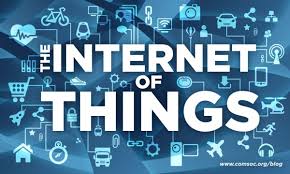 IDC predicts global spending on Internet of Things (IoT) to reach nearly $1.1 trillion by 2021. Reseller ME discovers how channel partners can capitalise on the opportunities with this technology as customers look to invest in the infrastructure that enable IoT.
IDC predicts global spending on Internet of Things (IoT) to reach nearly $1.1 trillion by 2021. Reseller ME discovers how channel partners can capitalise on the opportunities with this technology as customers look to invest in the infrastructure that enable IoT.
The adoption of Internet of Things (IoT)in the Middle East region is projected to rise over the next few years as customers digitise their operations and enhance productivity.
IDC expects IoT to grow to a value of $1.1 trillion in 2021. The research firm also says that IoT hardware will be the largest technology category in 2018 with $239 billion going largely towards modules and sensors along with some spending on infrastructure and security. According to the report, services will be the second largest technology category, followed by software and connectivity.
“By 2021, more than 55 percent of spending on IoT projects will be for software and services,” said Carrie MacGillivray, vice president, Internet of Things and Mobility, IDC. “Software creates the foundation upon which IoT applications and use cases can be realised. However, it is the services that help bring all the technology elements together to create a comprehensive solution that will benefit organisations and help them achieve a quicker time to value.”
“In our region, many countries have adopted diverse IoT trends, in both private and public sectors. One of which is the UAE’s initiative for “Smart Dubai”, which was launched in 2014 with a vision of transforming Dubai into the most efficient and safe city. The progress has been very successful so far, and Dubai is now moving towards its aim by establishing itself as the smartest city ever, enabling the government to improve productivity, efficiency, and citizen experiences,” says Mohammad Jamal Tabbara, senior systems engineer, UAE and Channel, Infoblox.
Eric Brouwers, VP, MEA, Barco, said, “More than just cutting costs, IoT usage can generate a strong return on investment by increasing customer loyalty and referrals, uncovering insights to cross-sell or up-sell to customers, and developing customer-appealing product. As organisations realise the added value that is provided by IoT, we are seeing further development of innovative industry-specific solutions.”
According to Graham Porter, head of channels, Middle East, Veeam, a number of vendors have been talking about “connected everything.”
For example, cars with sensors talking to the garage and insurance company; manufacturing machines on an IP network feeding back information about likely failures and component shortages; houses and communities being checked to ensure utilities are 100 percent available by monitoring pumps, generators, water levels and electrical consumption.
However, how does a partner fit into this picture? Porter says, “IoT solutions are typically verticalised and require a lot of services, so this becomes a fundamental question to partners ‘who are you and what do you do?’”
He goes on to explain that while there is a great deal of hype around the technology, the partnerships required to make it a reality are still in its infancy. The potential of IoT is vast and enormous and partners need to be well-equipped to truly optimise it.
“Smart cities such as Dubai are looking at road management, where they have already rolled out a toll system based on RFID, however this is being driven by vendors and consultants today, not partners,” he adds.
Agreeing, Tabbara says, “Businesses are commonly looking for an integrated end-to-end IoT solutions. Channel partners need to identify the current IoT trends and regional initiatives at first, and then offer integrated solutions that form an orchestrated ecosystem to their prospects.”
He believes by doing so, and by offering an end-to-end multi-vendor integrated IoT solution, partners can go after diverse opportunities, make more margins from multiple technologies simultaneously, and diversify their revenue stream.
“The way to find high-potential IoT opportunities is to discover and clearly understand where value can be enhanced – and the types of applications or connectivity that can be successfully added. IoT applications are already used across many industries to improve workplace productivity using real-time data. By providing dashboards and reports to decision makers through smartphones or tablets, it provides easier access to take complex decisions in real time. It is all about identifying the gaps present in current operations, and seeing how IoT can help in transformational change,” explains Brouwers.
Pouya Parsafar, CEO, Enterprise Systems, says, “Training for the sales and presales teams to identify their client’s business dynamics and understanding their clients’ pain points is a key skill set needed for all eco and channel partners to start the IoT journey with their customers.”
Albeit there are several challenges such as rapid pace of technology, security, lack of skillsets and so on, hindering partners from maximising the prospects present to offer intelligent solutions; they should invest time and resources in enabling themselves. This also means utilising the support from vendors and distributors.
“Ultimately,” says Porter. “this is not “business as usual” for partners, as this demands a mixture of IT and industry knowledge. An element this region has lacked is vertically specialised partners, which is an opportunity partners should focus on.”





